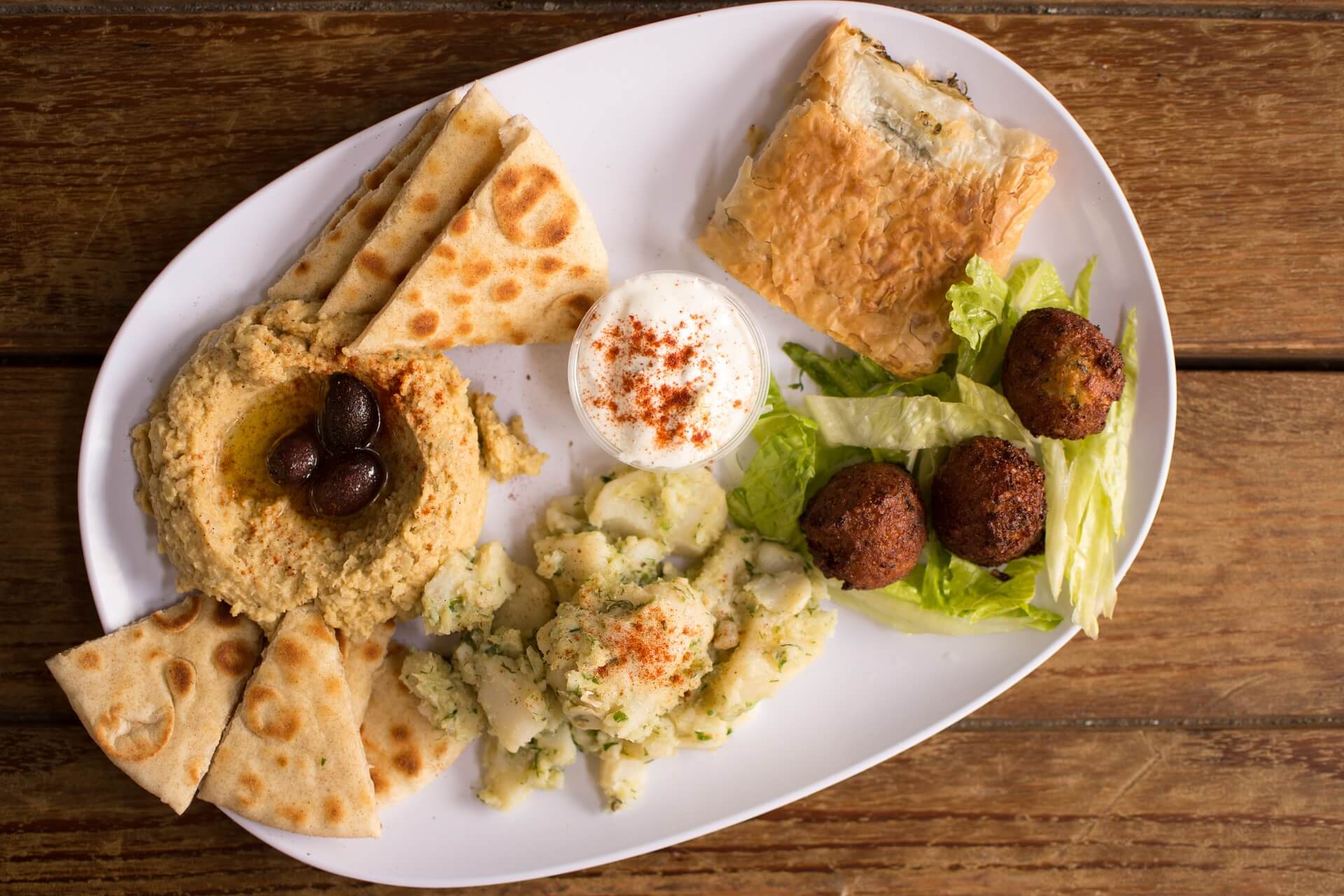If there’s anything Filipinos and Israelis have in common, it’s their love for food. When you visit Israel, expect mounds of fresh vegetable salads, salty cheeses, and savory eggs swimming in a tomato and pepper sauce. Imagine fragrant breads and an assortment of fruits served with sweet juice, chocolate milk, or rich coffee. And that’s just breakfast.
The flavor profile is a perfect match for Filipinos. Like our countrymen, Israelis don’t just dine; they use meals to bond with family and friends, share stories, and, occasionally, comment on the food. With Israeli dishes on the table, however, even chatty Pinoys will be at a loss for words other than praises for how tasty the meatless falafel is!
Before we dive into food to eat in Israel (or should we say, dig in), let’s take a trip down memory lane and see how Israeli food came about.
It’s a Long Story
The story of Israeli cuisine begins after the Second World War. When David Ben-Gurion, then head of the Jewish Agency, declared Israel’s independence in 1948, Jews from around the world flocked to the new nation. In fact, the infant state found itself absorbing about 100,000 immigrants a year.
With this massive wave of immigration came diverse cuisines and cooking traditions. Each group of people quite literally brought something to the table. The most influential communities were the Ashkenazic and Sephardic peoples.
- Ashkenazic food came from Jewish immigrants from east and west Europe. The dishes exhibit strong Spanish and Portuguese influences. Dishes are usually sweeter than Sephardic meals.
- Sephardic food came from Jewish immigrants from the Middle East. Dishes often use aromatic herbs and spices, making them distinctively spicier than the other.
These food traditions mixed and spread throughout Israel. Which of the two is more popular? Neither. Modern Israeli food is a combination of the two traditions and further enriched by the cuisines of other ethnic groups that migrated to the country.
Expect, however, one type of food to dominate restaurant menus and street food in Israel: Kashrut.
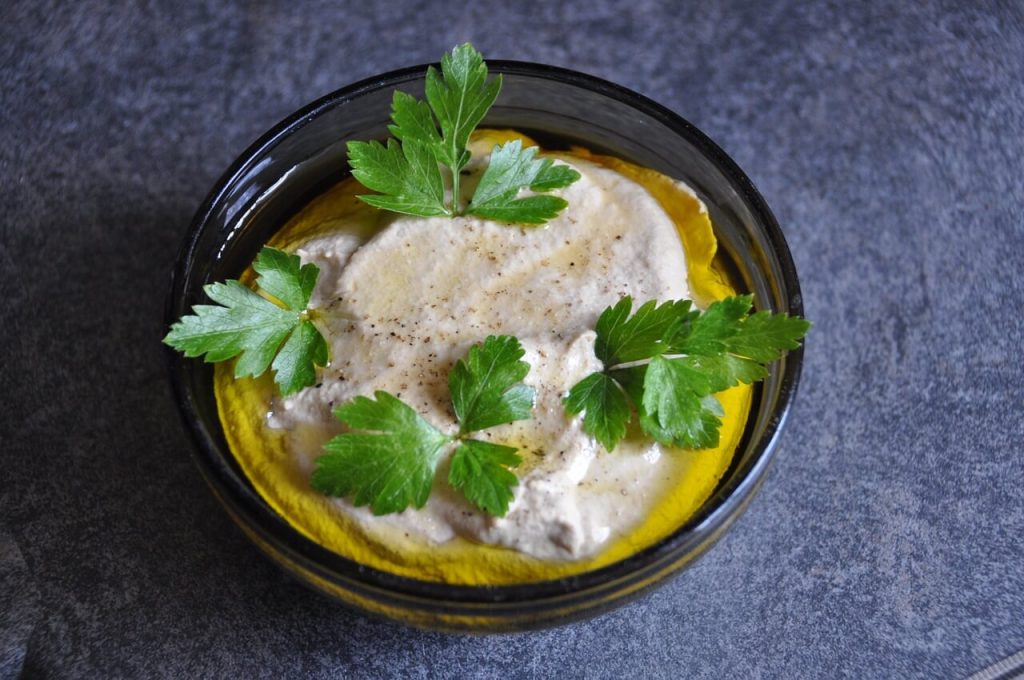
The Kashrut
The Kashrut refers to a system of dietary rules based on the Torah which helps Jews lead a life of holiness. Foods that follow these guidelines are called kosher.
Kosher meat includes bulls, cows, lambs, sheep, goats, springbok, and veal, as well as goose, duck, chicken, and turkey. No shellfish, because the Kashrut allows only fish with fins and scales.
Moreover, the Kashrut prohibits Jews from cooking, serving, or eating milk and meat at the same time. Some Jewish households have separate utensils for meat and dairy products.
Take note that not all restaurants in Israel are kosher. This is just to prepare you in case your travel buddy pulls you into a restaurant that displays a kosher certificate.
Now, let’s get to the meat of this Israel food guide. Here’s a rundown of the food you absolutely must try in this Mediterranean country.
The Israeli Food You shouldn’t Miss
Sure, there are fast food places that offer the usual burger-and-fries meal. But to dine in any of those places is a disservice — to the country’s rich culinary heritage and to your taste buds. To truly experience Israel, you have to take part in its meals. So, cast your conventional cravings aside and dive into these sweet and savory treats.
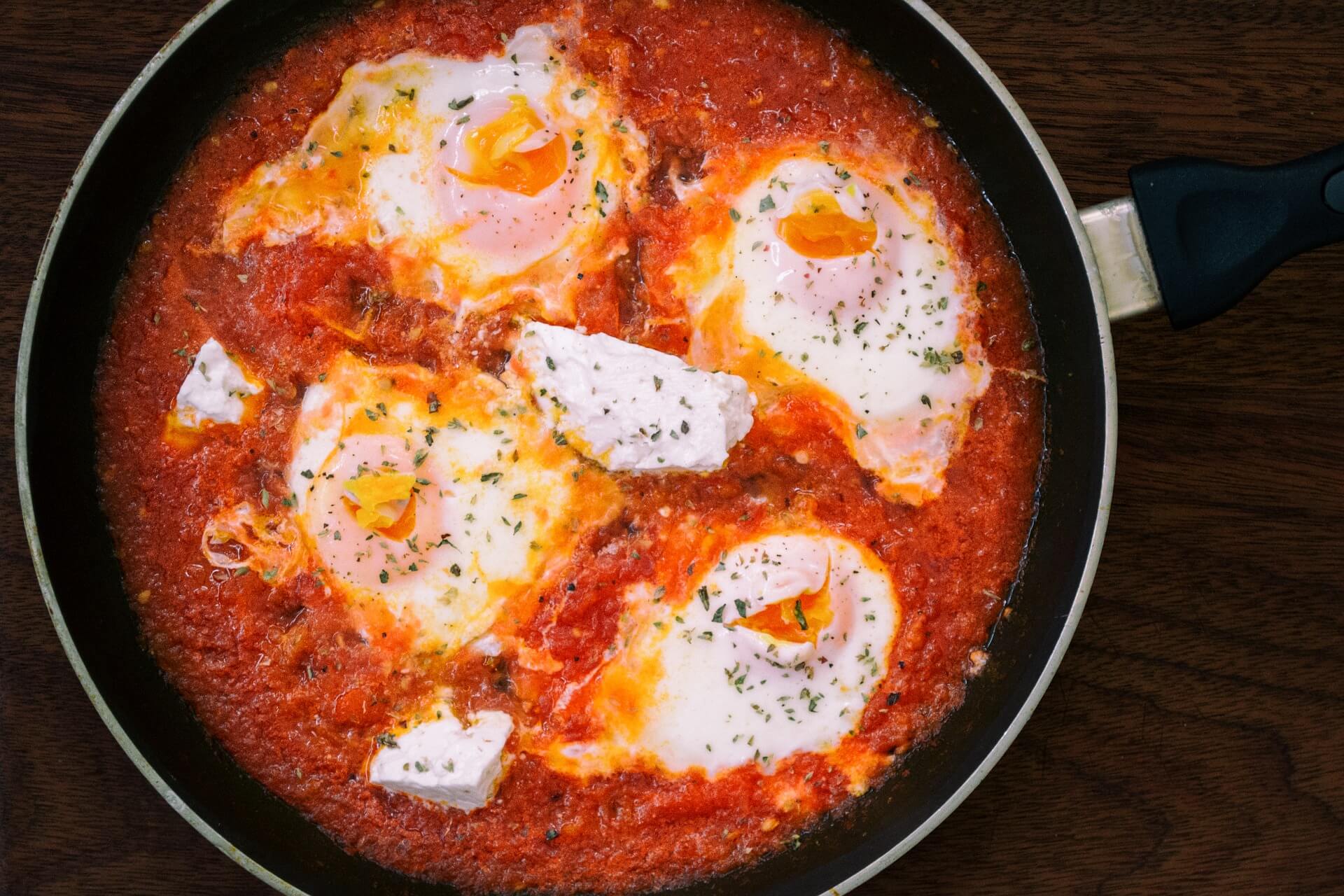
For Breakfast
- Shakshooka – This means “to shake” in Tunisian Arabic, in reference to the way people poach eggs in onions, tomatoes, and chili sauce to create a stew. They often finish it with chopped parsley or coriander.
- Borekas – These are little parcels of dough are fried to a crisp in oil or melted butter. Israelis stuff them with ground beef, cheese, and vegetables. They’re like empanadas; you can eat them for breakfast. They come in many shapes, such as rectangles or crescents.
- Israeli salad – People cut cucumbers, tomatoes, onions, bell peppers, garlic, parsley, and mint leaves into small pieces and toss them in a bowl. They drizzle the salad with olive oil and lemon juice and season it with salt and pepper.

For Lunch or Dinner
- Pita Bread – This is one of the staple foods in Israel. It’s a versatile flatbread baked from wheat flour and leavened with yeast. It’s soft and slightly chewy. The fun part is that it often comes with a pocket, which you could stuff with fillings. People also use it to scoop sauces or wrap kebabs or falafels. Some Israelis bake it into chips.
- Falafels – Speaking of things to wrap into pita, falafels are one of the cornerstones of Israeli cuisine. These are deep-fried balls of chickpeas often served with pita bread. Some varieties contain fava beans and onions. Israelis also lay them on a bed of salad, hummus, or tahini.
- Schnitzel – These are chicken or turkey cutlets that Israelis flatten, cover in beaten eggs and bread crumbs, and fry to a crisp. They serve it with hummus, ketchup, sesame seeds, or paprika. They also use schnitzels as pita fillings or a side dish to salads or fries.
- Baba Ganoush – This is a Levantine dish made of mashed eggplants mixed with tahini, olive oil, and various seasonings. People often use it as a dip for pita or a side to savory dishes.
- Shawarma – This food is familiar to Filipinos, but Israelis take their shawarma seriously — they’re said to make some of the best in the world. They grill meat (usually chicken, turkey, or lamb) slowly on a rotating vertical spit and season it with various spices. You can enjoy it on pita or laffa bread (a large, soft flatbread) with a generous helping of hummus or fresh salads.
- Kubbeh Stew – This is a stew made of kubbeh dumplings, which are semolina or bulgur wheat stuffed with ground meat. Israelis serve them in a tangy beet broth.
- Sabich – If you’re in the mood for a sandwich, buy a sabich. It’s made from pita stuffed with fried eggplants, hard-boiled eggs, tahini, amba, tomatoes, and cucumbers. It is a popular dish all over Israel.
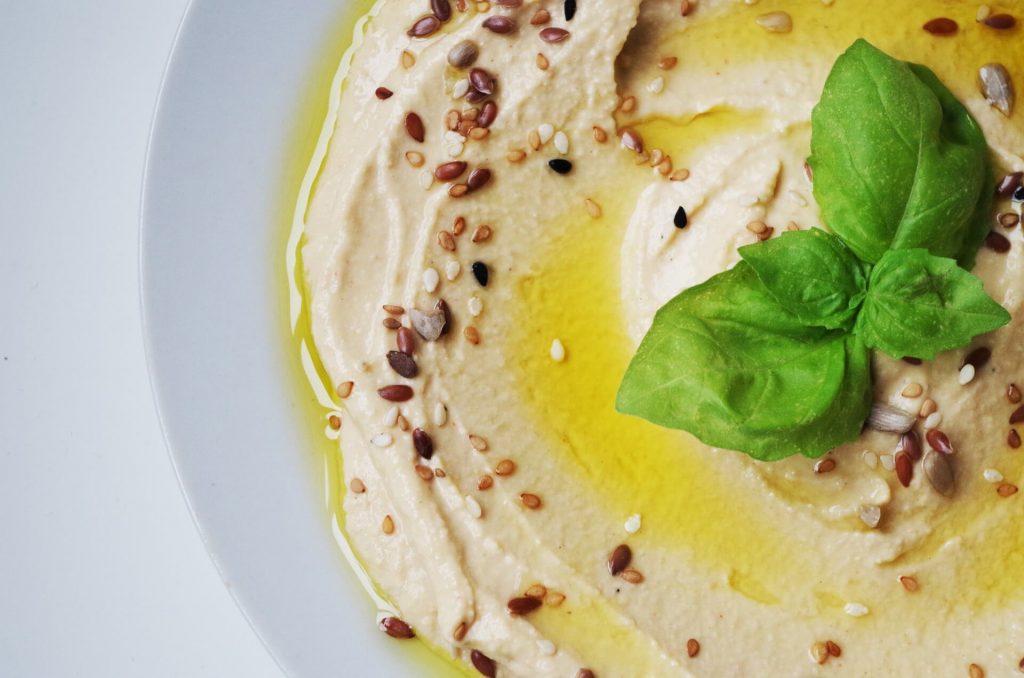
Spreads and Condiments
- Hummus – You can find this paste in various dishes in Israel, from street food to expensive restaurants. Hummus is a mashed chickpea spread that contains lemon juice, garlic, and, sometimes, tahini. Israelis often serve it with pita.
- Tahini – This is a creamy and smooth paste that people use as a condiment or sauce. It contains ground sesame, salt, pepper, and lemon juice.
- Charif – This is spicy spread that people put on roasted veggies, falafels, and shawarmas.
- Amba – This is a pickled mango sauce Israelis drizzle over shawarmas, kebabs, falafels, and salads.
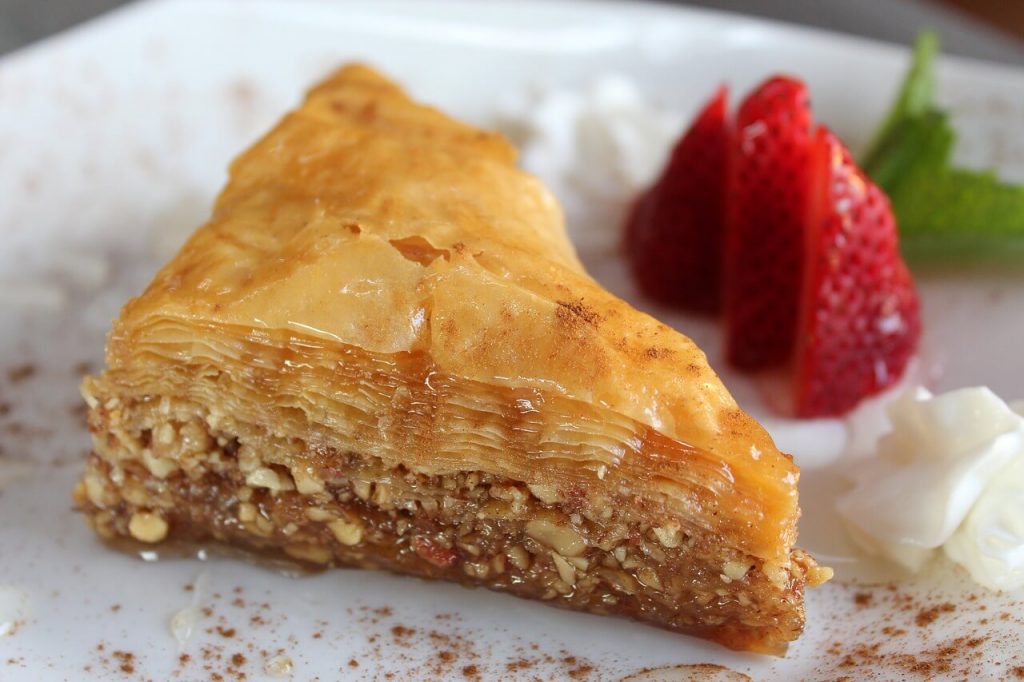
For Dessert
- Baklava – This is a sweet pastry made of layers of phyllo dough. Israelis season it with different spices, stuff it with a mixture of nuts, and top it with a honey-lemon syrup.
- Malabi – Often called the rosewater pudding, this is a creamy, milk-based pudding perfumed with rosewater. People drizzle sweet raspberry syrup and sprinkle pistachios on top of it.
- Halvah – This is a dense, flaky, tahini-based confection that comes in hundreds of flavors, including chocolate and vanilla. People incorporate all sorts of ingredients, such as nuts, dried fruits, and coffee extracts, into their own halvah recipes.
- Mutabak – People enjoy this paper-thin filo dough filled with soft cheese crumbles, nuts, or fruits and then baked into the shape of an envelope.
- Kanafeh – Cheese lovers, unite! Kanafeh is a famed cheese pastry soaked in a sugar-based syrup and topped with nuts.

Israeli Drinks
- Hafuch Coffee – This coffee goes well with almost any food in Israel. Popularly known as upside-down coffee, Hafuch coffee follows a famed reverse process. People pour steamed milk at the bottom of the cup and cover it with a shot of espresso. Then, they top it with milk froth and nutmeg or cocoa powder.
- Lemonana – You can drink Israelis’ favorite summer beverage any time of the year. Lemonana is a mix of icy lemonade and crushed mint leaves. Fun fact: its name is a combination of the Hebrew words for lemon and mint.
- Arak – If you’re looking for a beverage with a 40-60% alcohol content, then arak is the way to go. This is an alcoholic drink made from anise and tastes a lot like licorice. Israelis often mix it with water, lemonade, or grapefruit juice and serve it with ice.
- Shoko b’sakit – This translates as “chocolate milk in a bag.” Children aren’t the only ones who love these; it’s a popular drink even among adults. Simply bite the corner off and pour the rich drink into your mouth.
- Local Wine – Don’t leave Israel without tasting its local wines, which range from kosher selections to reds and whites from Israel’s rolling vineyards.
Israel’s Culinary Scene
Festive. Colorful. Spice-filled. There are so many words to describe the food in Israel. One thing is sure, though: eating authentic dishes whose recipes were passed down through the generations and given a modern twist is a one-of-a-kind experience.
So, when your travel buddies ask what’s to eat in Israel, say that the food involves more than just falafels and hummus. The combination of spicy and savory, old and new, and sweet and tart will give you a true taste of Israel.
Bete’avon!

